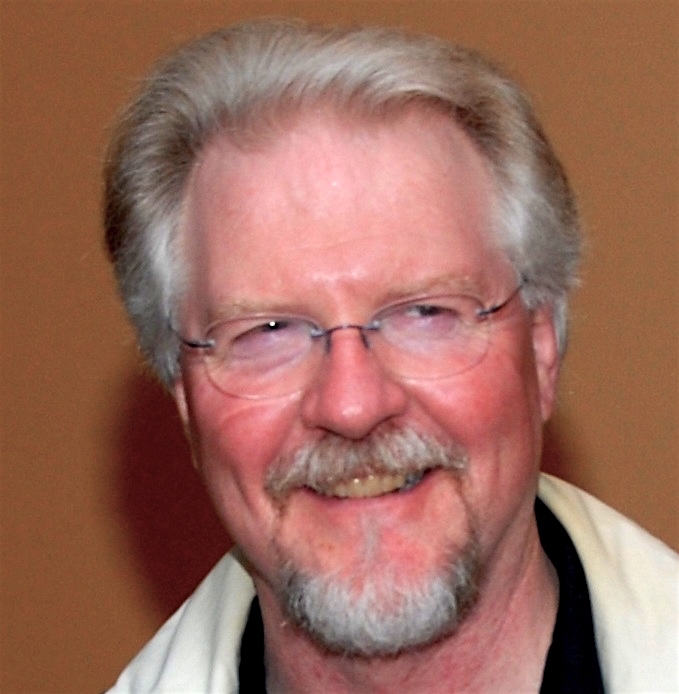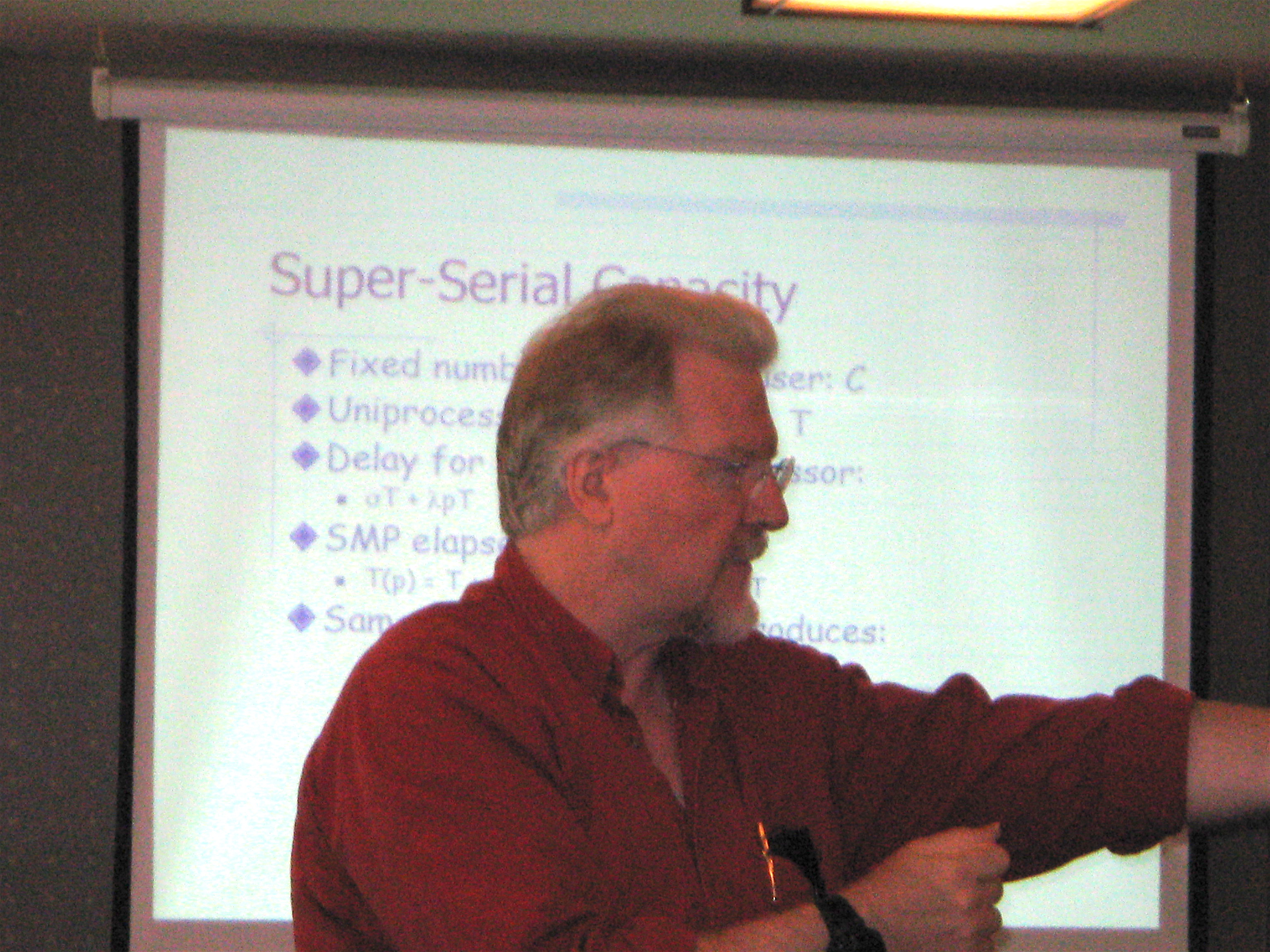| |
 | Neil Gunther was born in Melbourne,Australia. He holds undergraduate
degrees in Chemistry and Physics, a Masters Degree in Applied
Mathematics (1976) from
La Trobe University,
Australia, and a doctorate
in Theoretical Physics (1980) from the
University of Southampton,
England. As an undergraduate, he became determined to avoid computers
after dropping yet another box of his FORTRAN punch-cards containing
molecular orbital calculations for a PDP-8 minicomputer. It seemed he
was doing more for the computer than it was doing for him!
However, upon arriving in the "Silicon Valley" in 1980 (at the dawn of
the PC revolution) he went from avoiding computers to building one!
Nonetheless, in the ensuing years, his physical sciences background has
provided valuable "ignorance" for understanding how computer systems
really work.
While learning to embrace the new PC computer technology, Dr. Gunther
taught physics at San Jose State University from 1980-1981. He then
became involved in contract work for NASA and JPL, modeling
thermoelectric materials used by the power systems on the
Voyager
and
Galileo deep spacecraft. |
In 1982, Dr. Gunther joined the famous
Xerox Palo Alto Research Center
(no longer owned by Xerox Corp.) where he spent eight years as a researcher (PARC was his
postdoctoral education in Computer Science). At PARC, he developed the
PARCbench multiprocessor benchmark (an early SPEC benchmark
contender), and he also developed the path-integral method
(borrowed from quantum mechanics) for analyzing large transients in
computer systems and packet networks.
| This latter research formed the basis of PART III of his book
The Practical Performance Analyst.
Other work at Xerox PARC included VLSI design
and test for the Dragon multiprocessor workstation. The Xerox Dragon was later reincarnated
as the SPARCcenter 2000 multiprocessor based on the XDbus from Sun Microsystems.
The XD in XDbus stands for Xerox Dragon.
In 1990 Dr. Gunther joined
Pyramid Technology
(now Fujitsu Siemens
Computers) where he held positions as Senior Scientist and Manager of
the Performance Analysis Group. In that capacity he helped Pyramid
attain industry-high
TPC
benchmarks on their Unix multiprocessor
products. He also carried out performance simulations for the design of
the RM1000 massively parallel database server. |  |
In 1994 Dr. Gunther founded
Performance Dynamics Company
whose clients
include such well-known companies as AT&T Wireless, eBay, FedEx, and Sun Microsystems.
Performance Dynamics Educational Services also offers
training courses
and workshops for the performance management and capacity planning of
large-scale distributed systems. Dr. Gunther lectures worldwide
(including courses given at Stanford and UCLA) and he has written
numerous articles,
and
several books
on a variety of topics in computer performance analysis.
Dr. Gunther is a member of the
Association for Computing Machinery
(ACM),
American Mathematical Society
(AMS),
American Physical Society
(APS),
SIGMETRICS, and the
Computer Measurement Group
(CMG), where he was awarded Best Technical Paper in 1996,
and the
A.A. Michelson Award
in 2008; the industry's highest honor for computer performance analysis and capacity planning.
He was also recently elected Senior Member of
Institute of Electrical and Electronics Engineers
(IEEE).
 Performance Dynamics has also embarked on joint research into
QIT
(Quantum Information Technology) where Dr. Gunther has developed a theory
of qubit bifurcation that is currently being tested experimentally. Since Dr. Gunther's
has
Dirac number 2
(because he received his M.Sc. in Applied Mathematics under
Prof. C. J. Eliezer;
one of
Dirac's
few research students) and his
Ph.D.
was awarded for studies in Broken Dynamical Symmetries in Quantum
Field Theory and Phase Transition Phenomena, he is well-equipped to explore the new frontier between
classical IT and quantum IT.
Copyright © Performance Dynamics Company. All Rights Reserved.
Performance Dynamics has also embarked on joint research into
QIT
(Quantum Information Technology) where Dr. Gunther has developed a theory
of qubit bifurcation that is currently being tested experimentally. Since Dr. Gunther's
has
Dirac number 2
(because he received his M.Sc. in Applied Mathematics under
Prof. C. J. Eliezer;
one of
Dirac's
few research students) and his
Ph.D.
was awarded for studies in Broken Dynamical Symmetries in Quantum
Field Theory and Phase Transition Phenomena, he is well-equipped to explore the new frontier between
classical IT and quantum IT.
Copyright © Performance Dynamics Company. All Rights Reserved.

|
| |